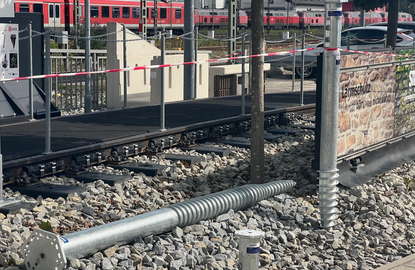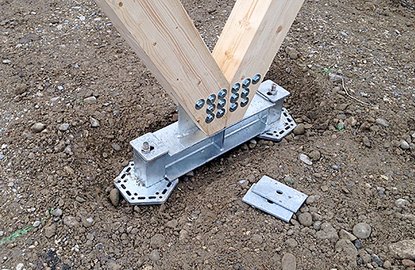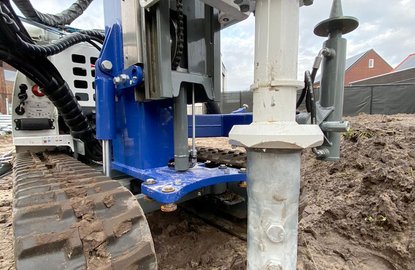Which solutions are available for surface and deep foundations?
Which solutions are available for surface and deep foundations?
Surface foundations
Surface foundations can be used on construction sites where the load-bearing layers can be found in the upper layers of the ground. The loads to be carried by the foundations are introduced into the ground directly beneath the built structure. There are two essential forces that work on these types of foundations. There is the bearing pressure which works on the foundations from below through the soil pressure and then there is the building pressure which works on the foundations from above. The foundations must also be installed below the frost line, which lies at a depth of around 80-120 cm.
There are several different types of typical surface foundations, including individual foundations, strip foundations and foundation plates:
Individual foundations:
The most common types of individual foundations are point or block foundations. These are built to carry large point loads, e.g. for the foundations of supports, and are usually made from reinforced concrete. Point foundations can also be constructed as sleeve foundations. This means that pre-manufactured supports are installed and then filled with concrete once in place.
Strip foundations:
Strip foundations are one of the most common types of surface foundations. They bear loads in a linear form and can be made from unreinforced or reinforced concrete. As a general rule, strip foundations transfer the loads from walls. In order to do this, the foundations are wider than the wall that they are serving as a foundation for.
Foundation plates:
This is a very economical solution when it comes to manufacturing surface foundations. Here the load is spread across the surface of the floor plates in the subsoil. The plate or surface foundations, which are reinforced with steel, have the advantage of being able to more easily compensate for slight sinking and cracks in the subsoil than other types of surface foundations.
Deep foundations
If the subsoil is too soft and of a poor quality, you may need to consider building a deep foundation instead, which means that the load that is to be carried will be placed on deeper load-bearing layers. Here there are different forces at work than those in play with surface foundations. Deep foundations are often constructed with pile systems and are made stable through the effects of point bearing pressure or surface friction that arise with ramming, drilling or driving in of piles.
There is wide range of products and solutions available for different types of deep foundations. Classic and common solutions include the use of displacement piles, auger piles and micropiles. Some of these types of piles are commonly used for in-situ concrete construction, this means that the concrete is poured in at the construction site. With these solutions, the foundations can reach depths of up to 30 metres.
Displacement piles:
These piles can also be placed in the ground without requiring any excavation work or removal of material. This piles are placed in the ground by means of ramming, vibration driving, forcing in, driving in or through a combination of these different procedures.
Auger piles:
As opposed to displacement piles, with auger piles earth is removed by means of a “worm” and then the hole formed by this process is filled with steel reinforcements and concrete.
Micropiles:
The two previously mentioned types of piles both fall into this category. They all have a small diameter (the outer diameter of auger piles is smaller than 300 mm and the outer diameter of driven piles is smaller than 150 mm) and they can usually be inserted into the ground with small drilling or ramming equipment.
In addition, aside from these pile solutions, there are other options when it comes to deep foundation construction, such as well foundations for example.
Ground screws as an all-round building solution
But there is an innovative and alternative product solution that can be used both for surface and deep foundations: ground screws. Ground screws are essentially displacement piles made from galvanised steel which are sunk into the soil with the help of a ground screw driver. The ground screws get their stability through surface friction on the pipe shaft and through the interlocking of the welded-on thread with the floor. This means that there is no need to move earth or use concrete during construction. And what’s more, there is no need for a comprehensive soil sealing. This means that the ground screws have significant advantages when compared to concrete foundations.
Due to their structure, the ground screws can be used for point foundations for a surface foundation and for economic deep foundations for small and medium-sized construction projects, particularly in the areas of residential construction, modular construction and infrastructure. The load-bearing capacity is usually equivalent to that of conventional concrete solutions. You can build at great depths with the V-series products from KRINNER, which are individual elements which can be connected to each other. With the suitable ground screw drivers from KRINNER you can construct your foundations with a very manageable building site.
The grounds screws can also be used to connect a deep foundation to a surface foundation. The best method for doing this is with a combined pile-raft foundation. By using ground screws beneath the foundation plates, the settlement sensitivity is significantly reduced in comparison to a conventional surface foundation and there is less pressure placed on the foundation plates as the grounds screws also carry a part of the load. This means that ground screws are an economical option for both surface and deep foundations as well as for combination foundations.





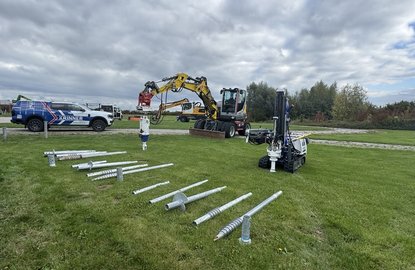
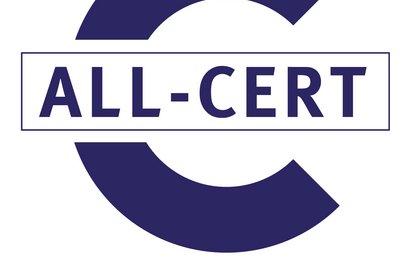



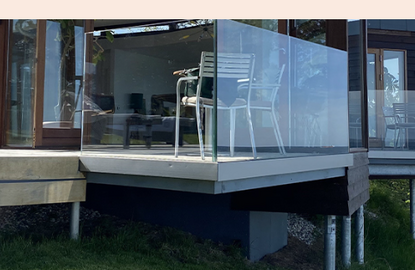




![[Translate to en:] [Translate to en:]](/fileadmin/_processed_/1/7/csm_Bild_2003416679.jpg)
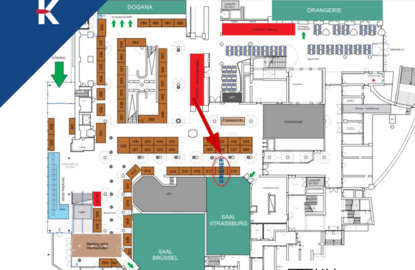

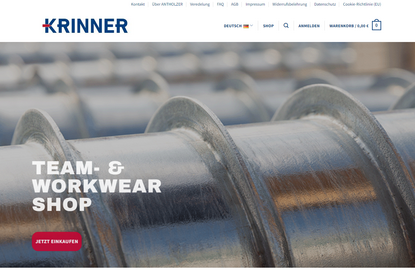
![[Translate to en:] [Translate to en:]](/fileadmin/_processed_/2/e/csm_MSG-Signet-Schwarz_ef33dcaf08.png)




![[Translate to en:] [Translate to en:]](/fileadmin/_processed_/4/5/csm_TERR_TM_V_CMYK_FC_Pos_5304b559c9.jpg)



